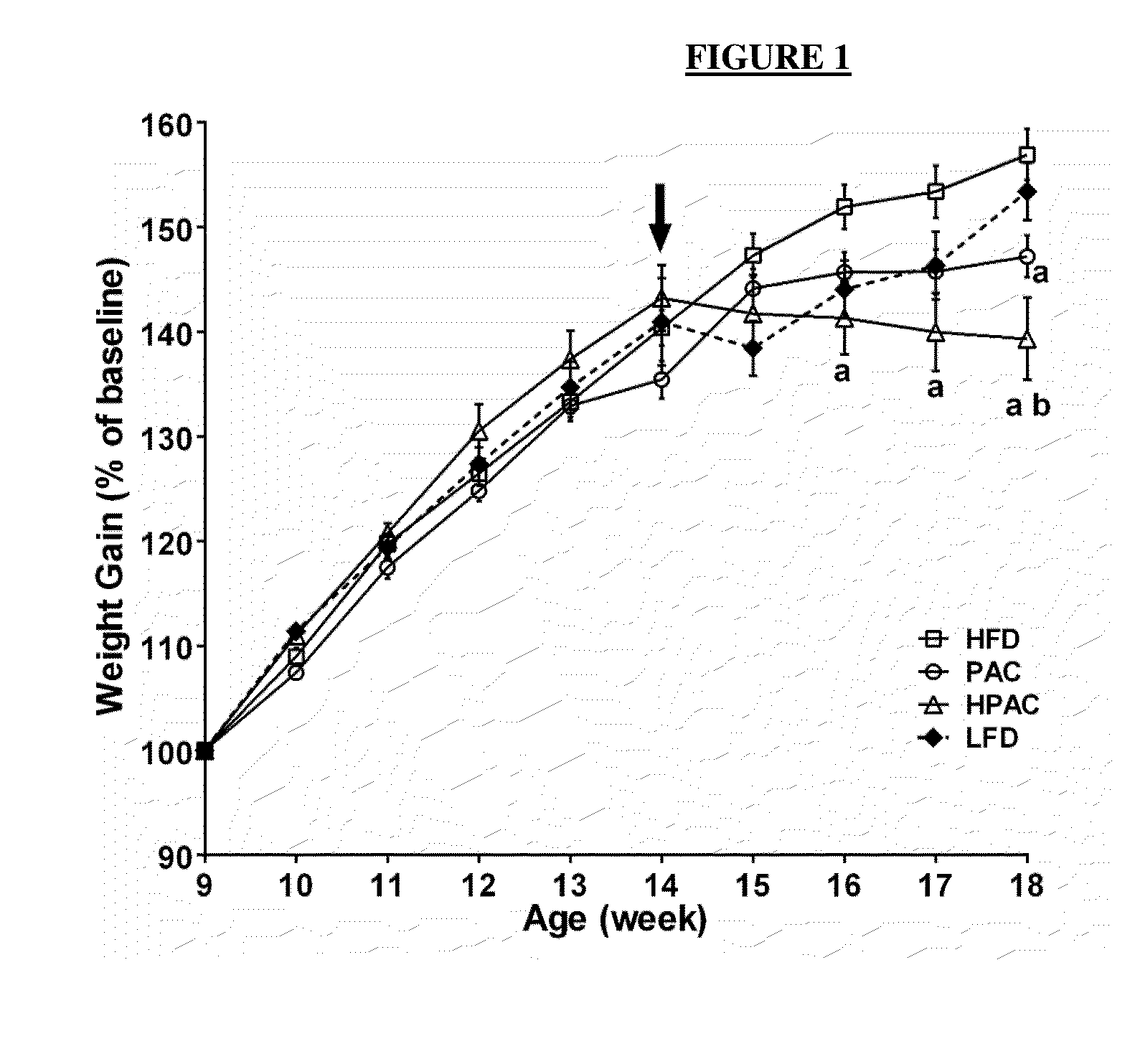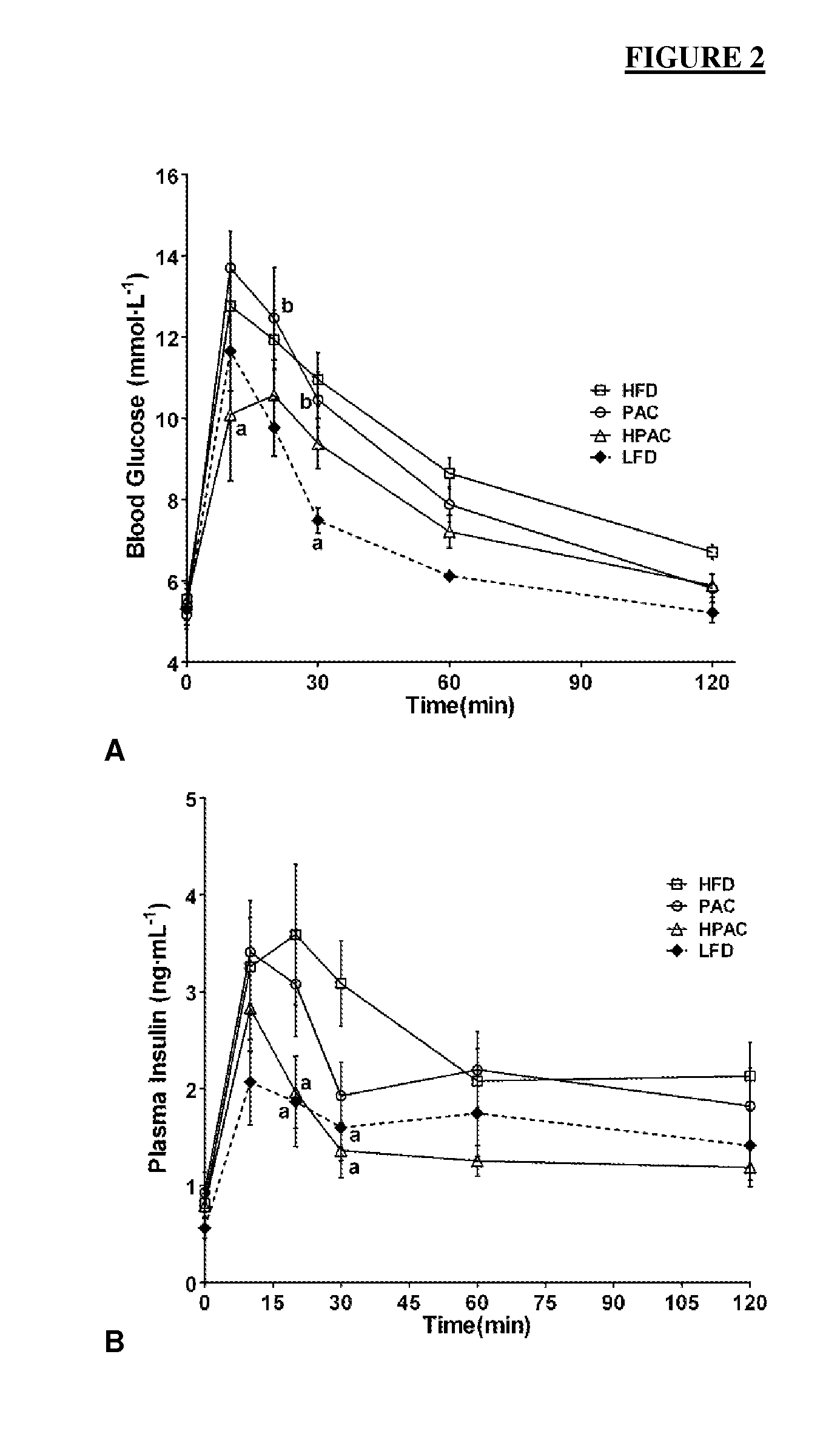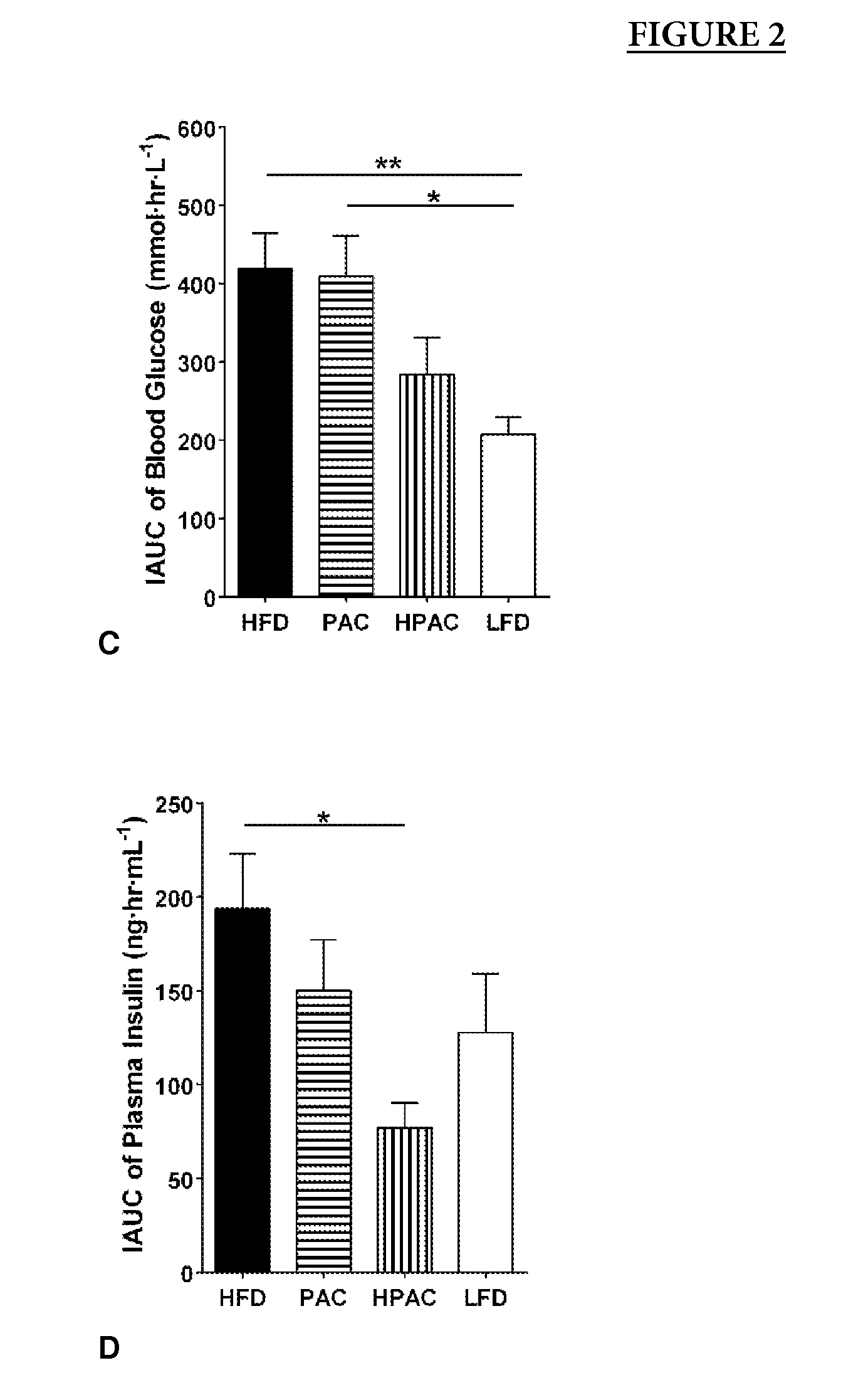Pea (Pisum sativum L.) Seed Coats and Seed Coat Fractions
a technology of peas and seeds, applied in the field of pulse grains, can solve the problems of limited absorption and lack of knowledge, lack of biomarkers specific for pac intake, etc., and achieve the effects of improving health and/or other beneficial effects, increasing the bioavailability of proanthocyanidins, and improving the bioavailability of native pa
- Summary
- Abstract
- Description
- Claims
- Application Information
AI Technical Summary
Benefits of technology
Problems solved by technology
Method used
Image
Examples
example 1
Preparation of Pea Seed Coat Diet
[0068]Seed coats of pea (Pisum sativum L.) cultivar ‘Solido’ were obtained from Mountain Meadows Food Processing Ltd. (Legal, Alberta). The smaller seed fragments were removed from the bulk PSC sample using a 1.0 mm screen (Canadian Standard sieve series #18, W.S. Tyler Co. of Canada, St. Catherines, ON). The cleaned PSC were then ground into a powder using a standard electric coffee grinder for rat feeding studies. A portion of the ground samples were used unprocessed (PAC fraction) and a portion was subjected to acid hydrolysis (HPAC fraction).
[0069]For acid hydrolysis, a 2N HCl solution (1 L total volume consisting of 170 mL food grade HCl, 330 mL deionized water and 500 mL ethanol) was added to ˜200 g of ground ‘Solido’ PSC, making a slurry. Acid hydrolysis was performed by placing the PSC slurry into a 100° C. water bath for 1 h (from the time the slurry came to a boil). After 1 h of slurry boiling, the mixture was cooled down to approximately r...
example 2
Animal Feeding Trial
[0070]Male Sprague-Dawley rats (n=84) were obtained from Charles River Canada (St. Constant, QC) at 8 wk of age and housed 2 per cage. All the animals had 1 wk of acclimatization with access to standard chow and water ad libitum. Then they were randomized into 4 groups, i.e. high fat diet (HFD), low fat diet (LFD), PAC-supplemented HFD (PAC), and HPAC-supplemented HFD (HPAC). LFD group remained on standard chow. All the others were introduced to a 6-week HFD regimen to induce glucose intolerance, which was confirmed using an oral glucose tolerance test (GTT, see Example 3 below). The 4 groups of rats were switched to the experimental diets (Table 1) for 4 wk. Body weights were measured weekly and food intake was recorded daily.
example 3
Glucose and Insulin Tolerance Tests
[0071]Oral (OGTT) or intraperitoneal GTT (IPGTT) was used to determine the status of glucose tolerance in all groups. IPGTT examines the effects of PAC feeding downstream of intestinal absorption factors because the glucose is introduced into the peripheral circulation, bypassing the gut. Seven days before tissue collection, after overnight fasting, all the rats were weighed and baseline blood glucose concentration was measured in whole blood taken from the tail vein with a glucometer (Accu-Check Compact Plus, Roche Diagnostics). Then they received a standard dose of glucose (1 g / kg; oral: 40% w / v, in ddH2O; ip: 20% w / v, in saline), blood glucose was measured at 10, 20, 30, 60, 120 min. Additional blood samples were collected at the same time points to obtain plasma and stored at −80° C. until assayed for insulin and glucagon. Incremental area under the curve (IAUC) was calculated as described [30].
[0072]Insulin tolerance tests (ITT) were conducted...
PUM
 Login to View More
Login to View More Abstract
Description
Claims
Application Information
 Login to View More
Login to View More - R&D
- Intellectual Property
- Life Sciences
- Materials
- Tech Scout
- Unparalleled Data Quality
- Higher Quality Content
- 60% Fewer Hallucinations
Browse by: Latest US Patents, China's latest patents, Technical Efficacy Thesaurus, Application Domain, Technology Topic, Popular Technical Reports.
© 2025 PatSnap. All rights reserved.Legal|Privacy policy|Modern Slavery Act Transparency Statement|Sitemap|About US| Contact US: help@patsnap.com



